The VERB: General Characteristics. Person & Number презентация
Содержание
- 2. General Survey of Verb The verb has an intricate morphological
- 3. Verbiality - the ability to express actions, processes and states: The
- 4. The morphological properties of the verb The system of verb derivational
- 5. The syntactic valancy of the verb - the combining power of
- 6. Subclassifications of Verbs
- 7. Morphological types are predetermined by two formal criteria: 1) the type
- 8. Lexico-syntactic classifications the valency of the verbs: avalent (to snow);
- 9. The Verb as a Part of Speech Verb - the only
- 10. According to the threefold approach the verb: Semantically: has the meaning
- 11. Syntactic function Syntactic function
- 12. The verb - a notional part of speech has the meaning
- 13. Different classifications of the Verb
- 14. Semantic classifications:
- 15. Formal (morphological) classifications: regular verbs (play, work, walk, etc.); irregular verbs
- 16. Functional classification The functional division of verbs: 1) finite - perform
- 17. Conclusion different classifications of the verb are based on a combination
- 18. Morphosyntactic categories of the Verb
- 19. Verbal categories of Person & Number Introduction The morpheme –s is
- 20. The grammatical meaning of number The grammatical meaning of number
- 21. The personal & numerical semantics are not process-related. The personal
- 22. Conclusion The verbal categories of person & number are realized only
- 23. The category of person The verbal category of person - a
- 24. The plural number of the verb is not opposed relative to
- 25. The category of number Two opposed form classes: (they) go
- 26. Singular & plural number refer to the person or thing denoted
- 27. Types of relations between the subject & predicate-verb singular & plural
- 28. Semantic correspondence: Semantic correspondence: A collective noun vs. a
- 29. Скачать презентацию
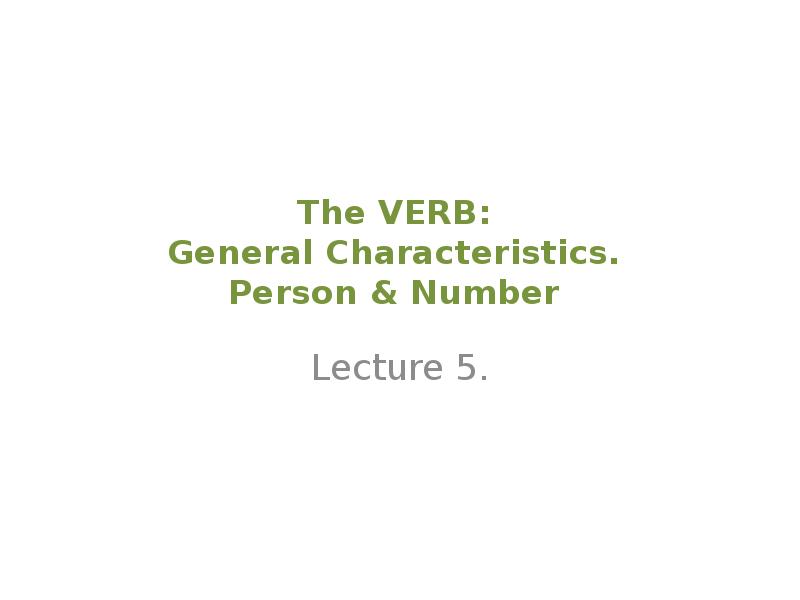



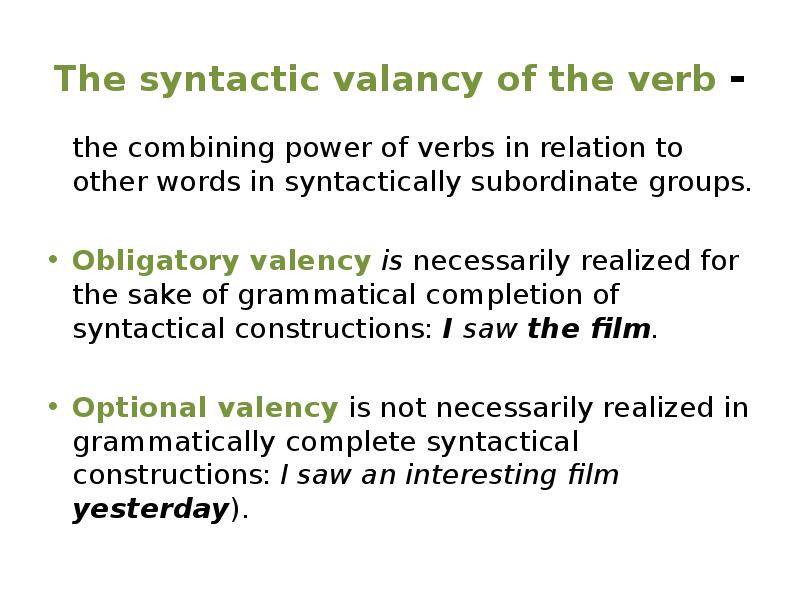
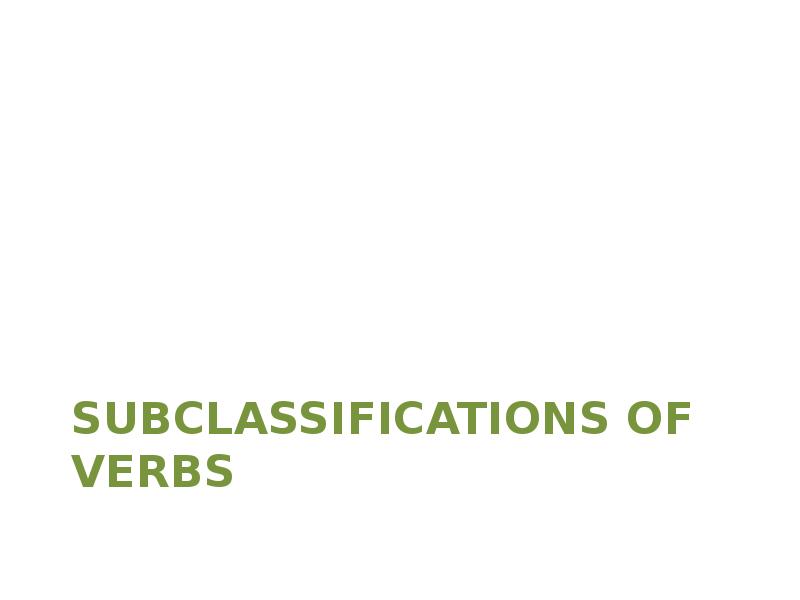
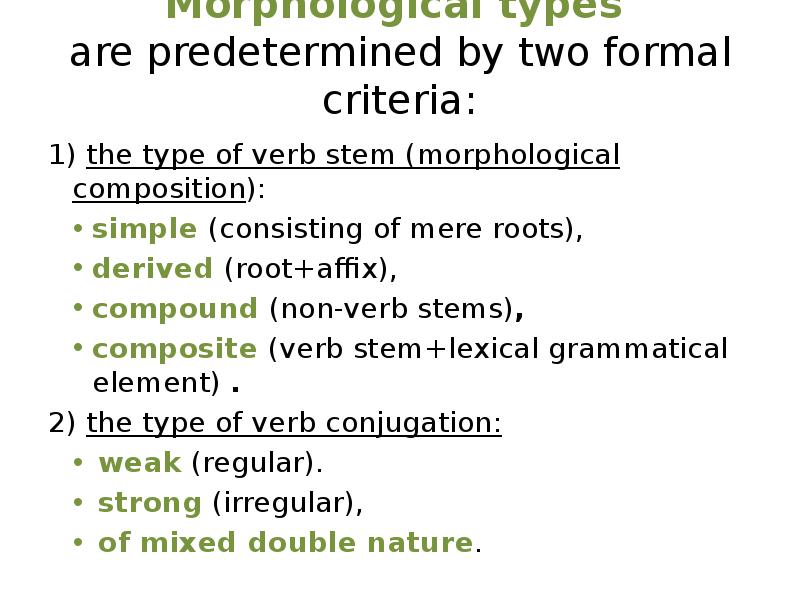
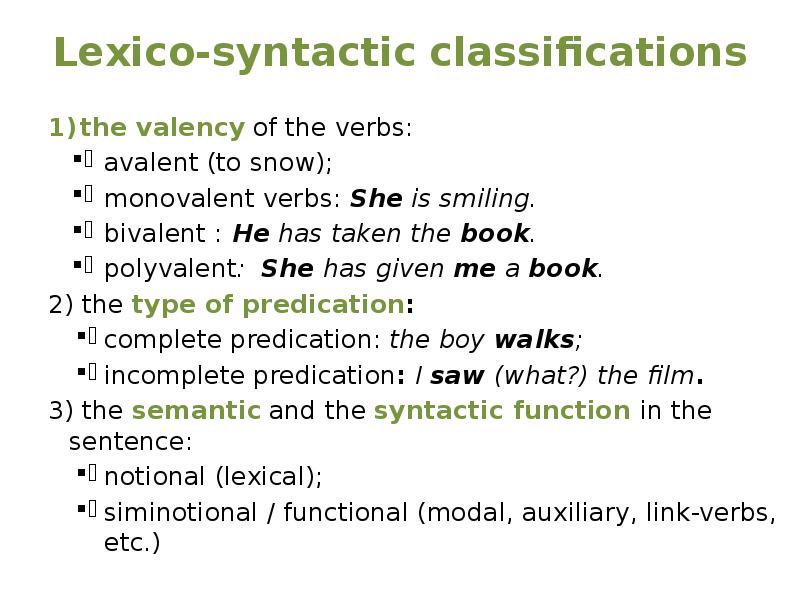
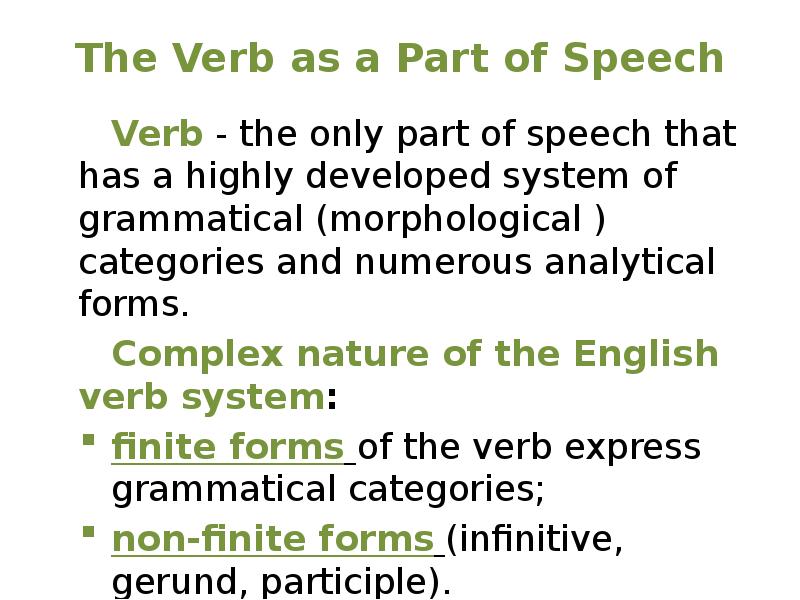
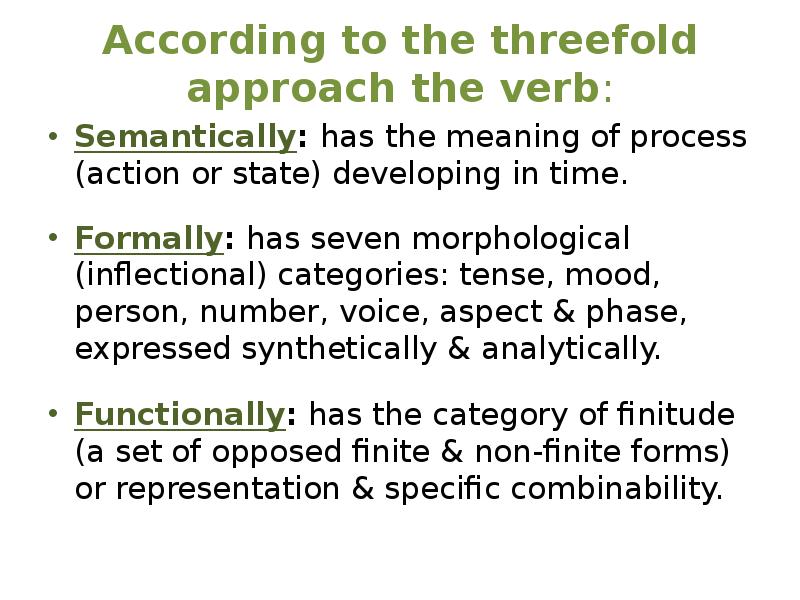
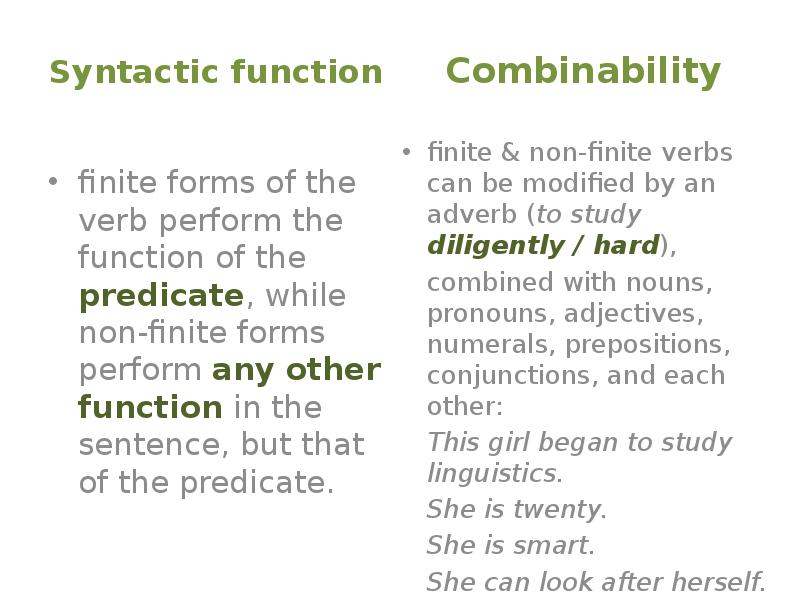
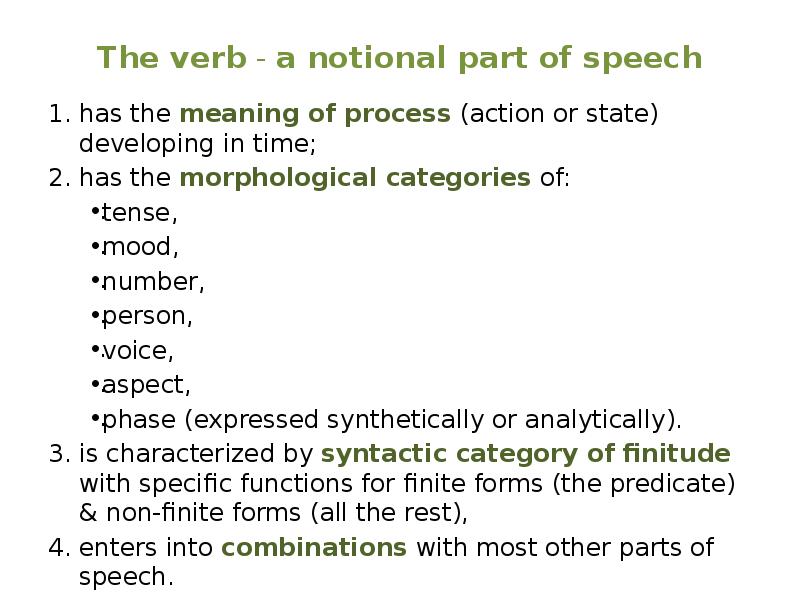
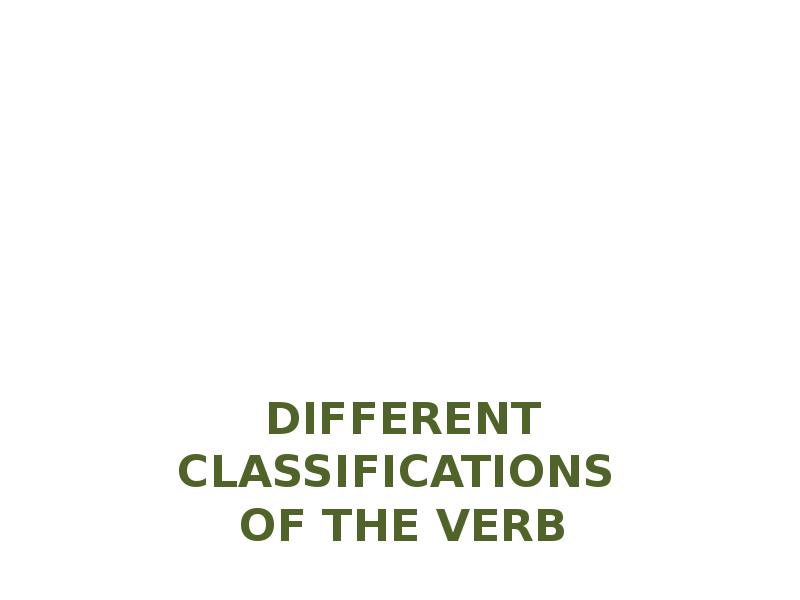
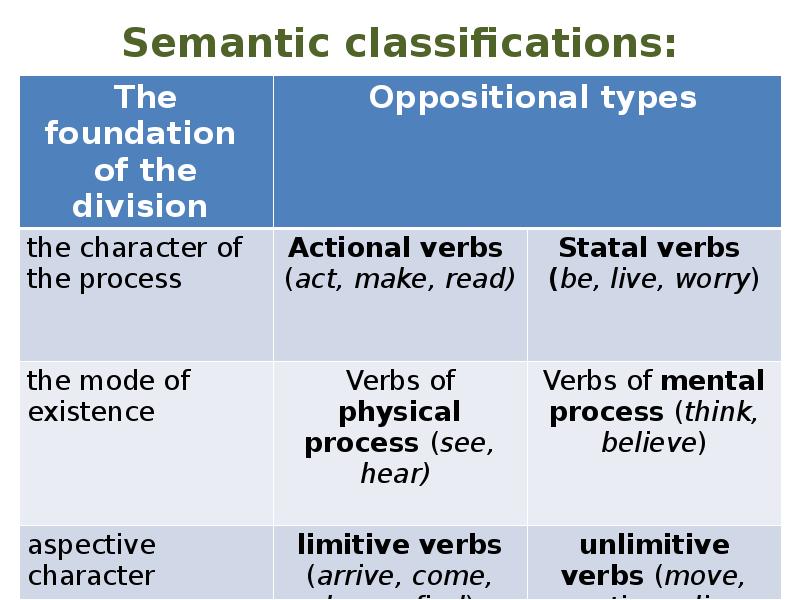

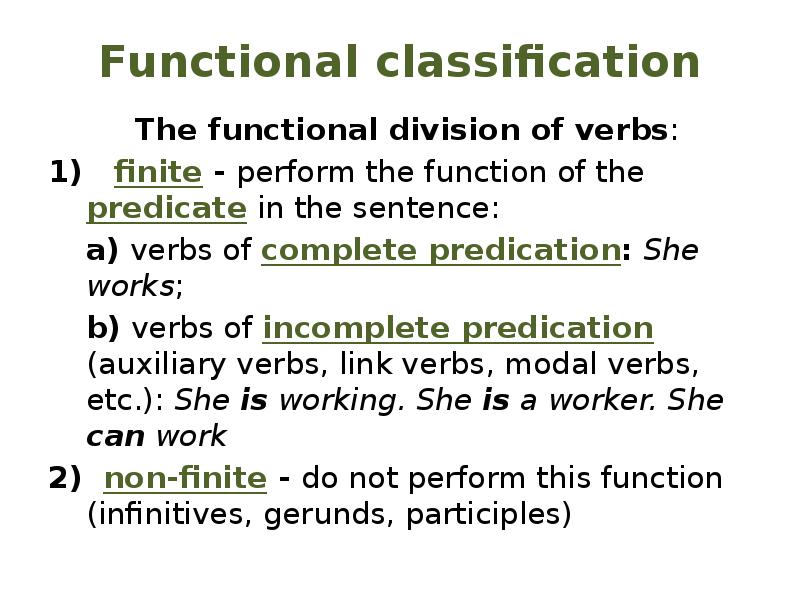
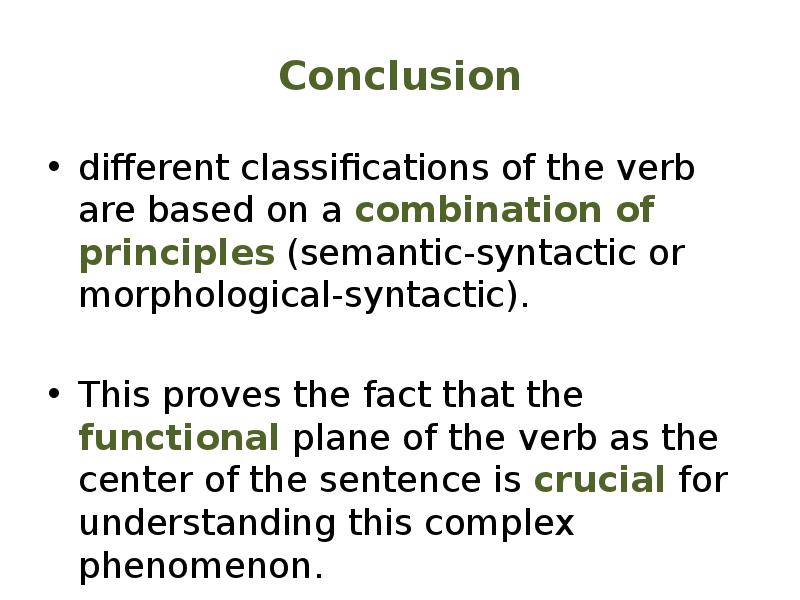
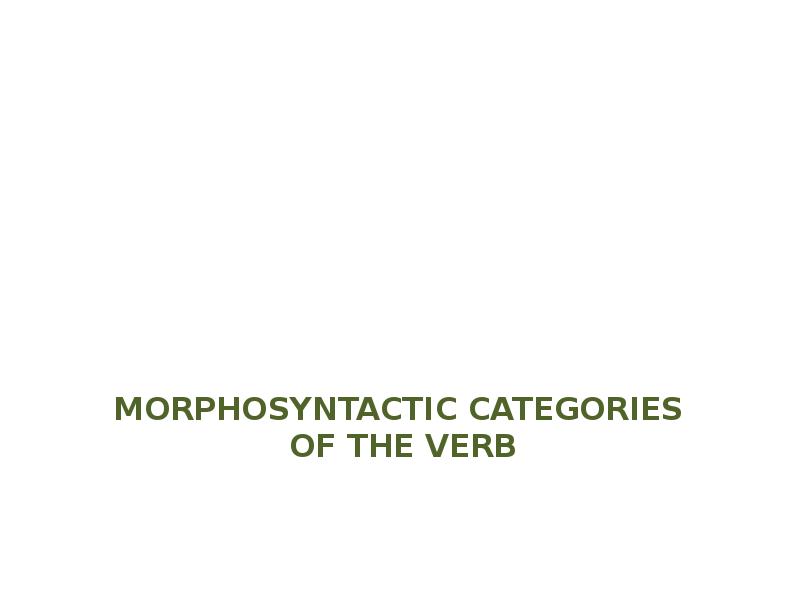
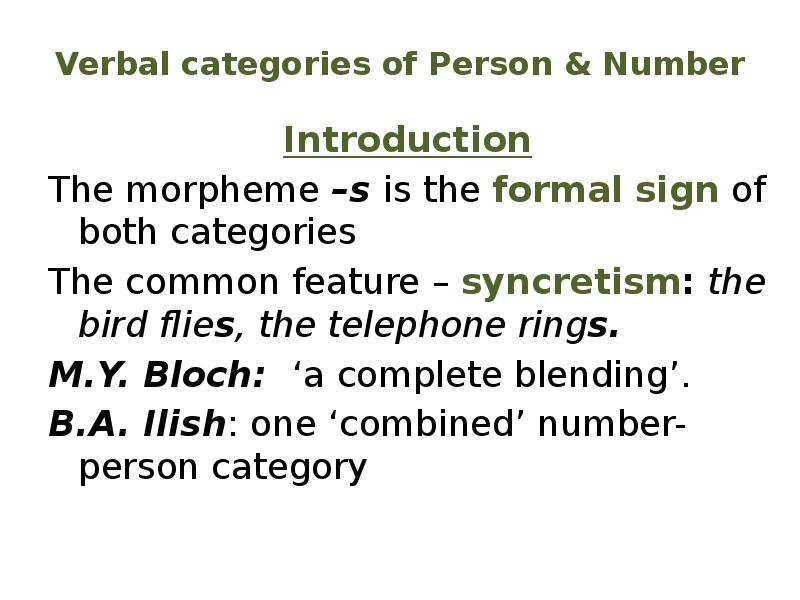
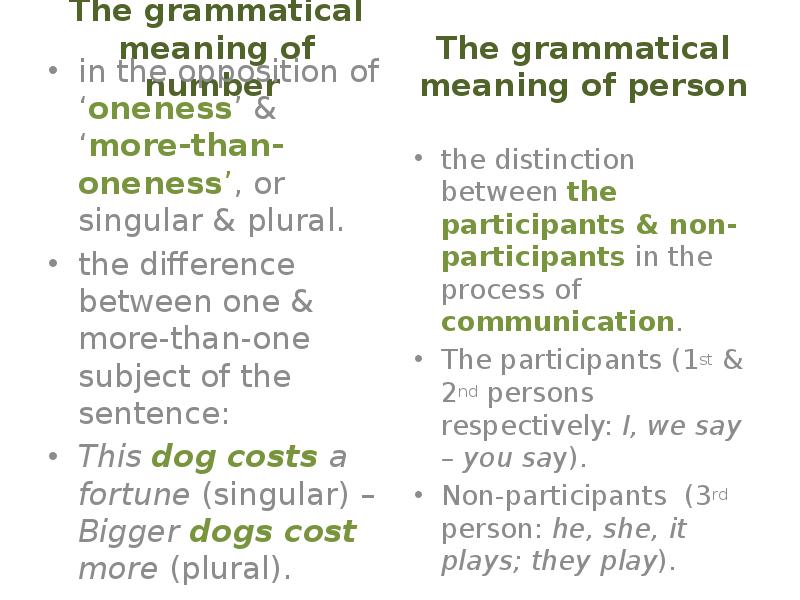
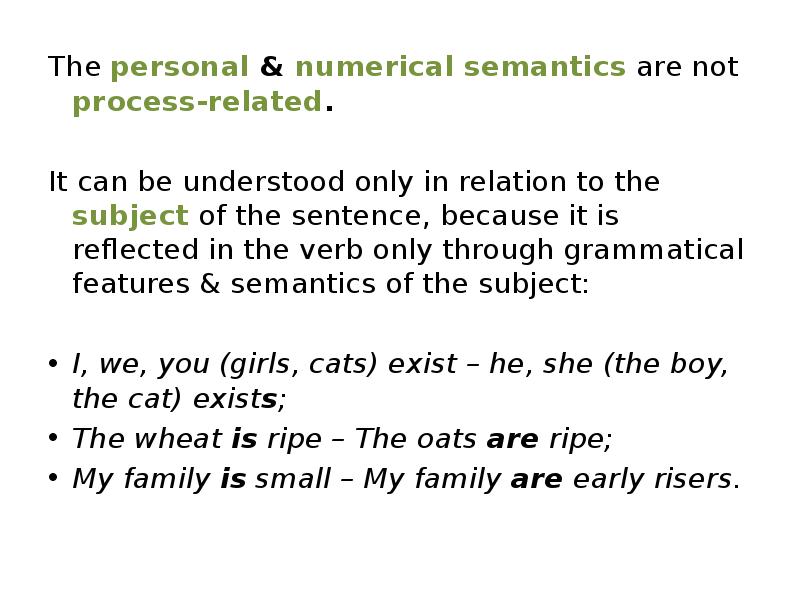
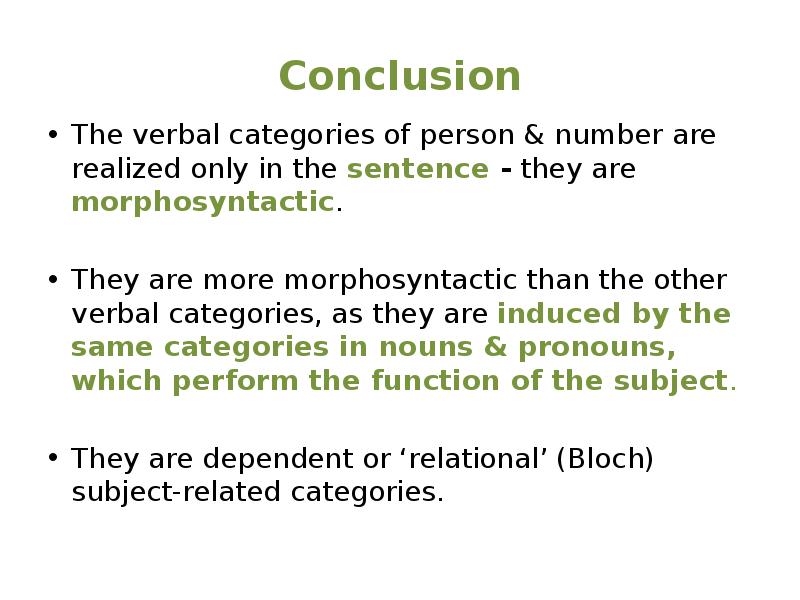

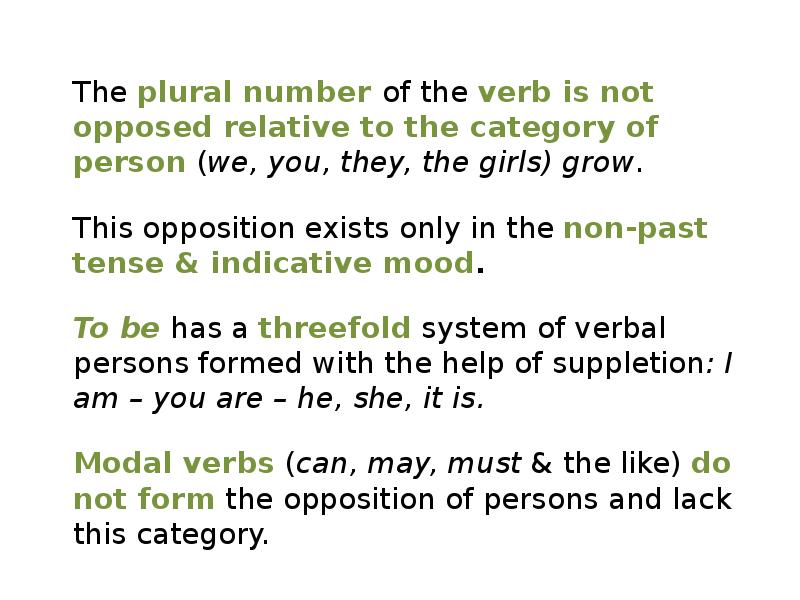
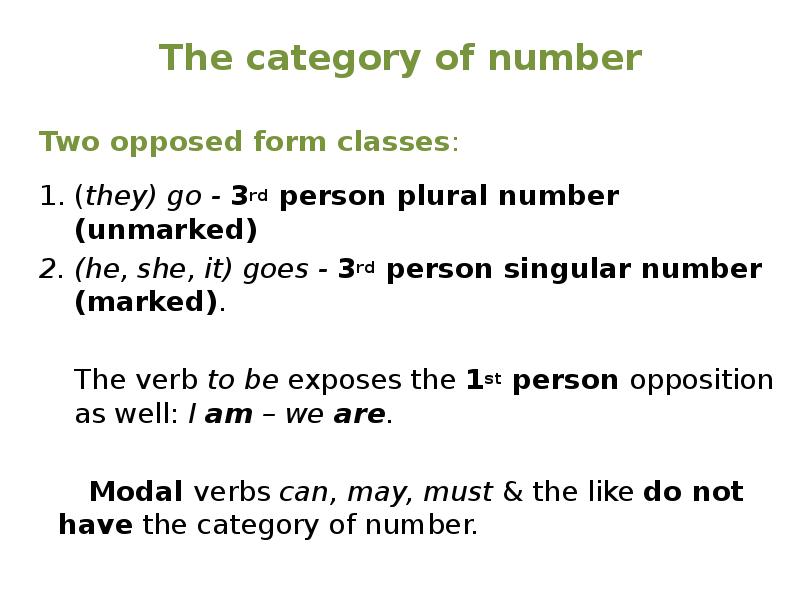
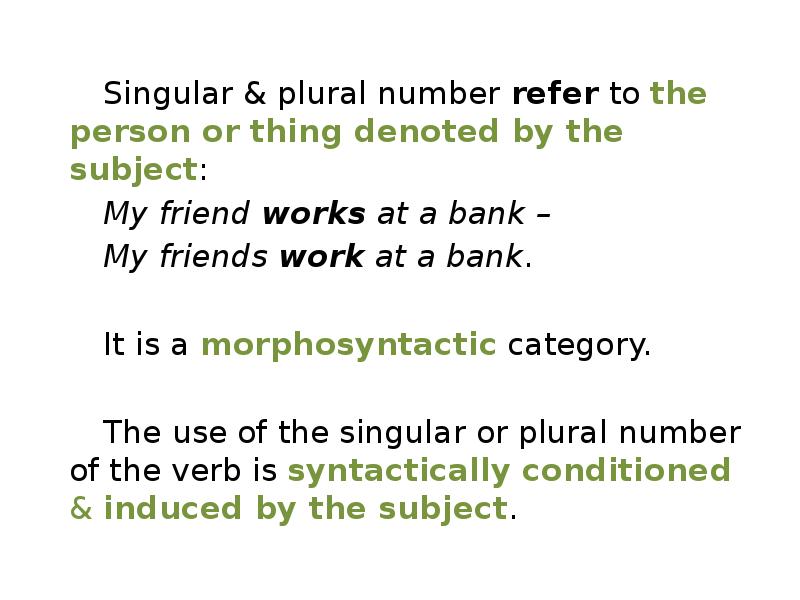
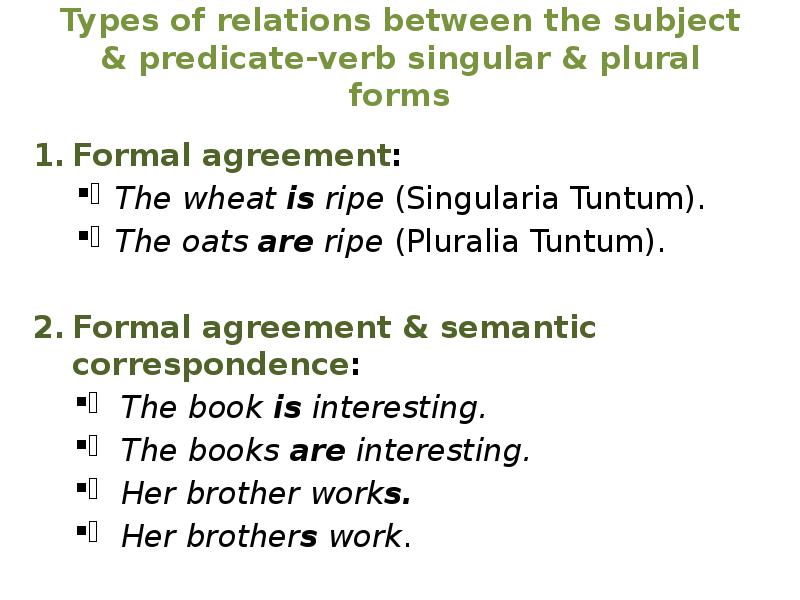
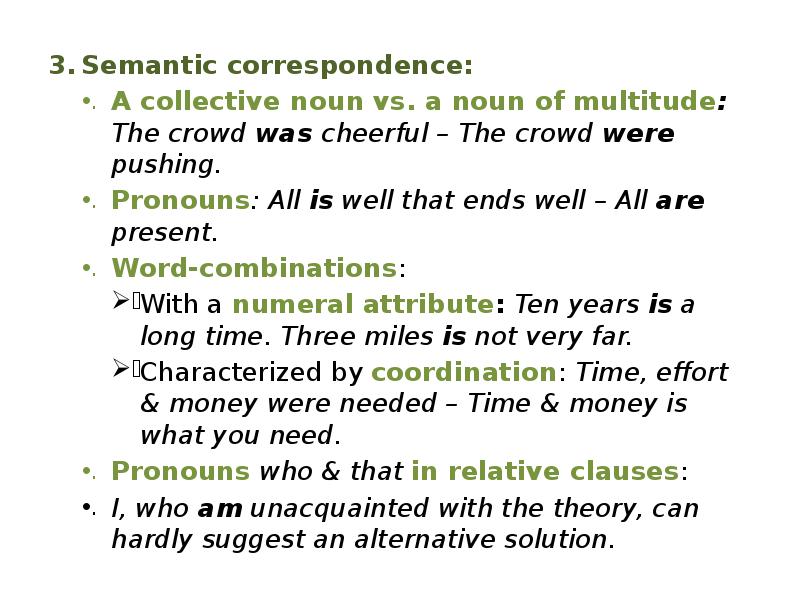
Слайды и текст этой презентации
Скачать презентацию на тему The VERB: General Characteristics. Person & Number можно ниже:
Похожие презентации





























